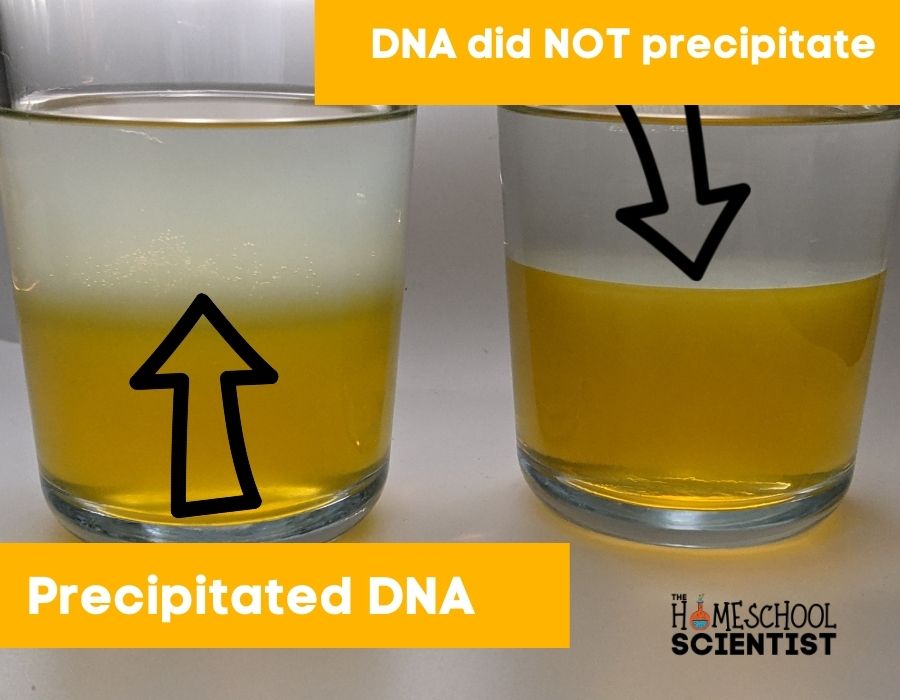Awesome Science Activity – Extracting DNA from a Pumpkin
“Extracting DNA” sounds so advanced and challenging; something of forensic laboratories or a research lab.
But Extracting DNA from a strawberry, beans, pumpkins, or any fruit or vegetable is an easy and fascinating process.
If your child knows the term DNA, whether they are in upper elementary, middle, or high school, the process of extracting DNA from part of a plant is an age-appropriate science activity.
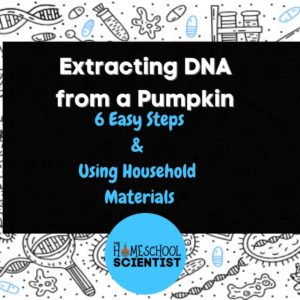
Besides…. Extracting DNA is hands-on and engaging.
Before beginning this activity, present an overview of the process and the purpose of each step in this DNA extraction activity. It will be a more meaningful learning experience if your child knows why the chop up the pumpkin and why soap and alcohol is added.
An Overview of Extracting DNA from a Plant Cell
There are 3 steps in the DNA extraction process used for this activity:
- Break down the cellulose that is the protective layer of the cell wall in plant cells.
- The second step in extracting DNA is getting through the cell membrane. The cell membrane is made of lipids (fats). This is done by adding the soap. The soap is made of long-chain molecules. One end of the soap molecule is not attracted to water (hydrophobic), so it attaches to the lipids. The other end is hydrophilic, so it attaches to the water. This process breaks open the cell membrane and the DNA is released.
- Use alcohol to precipitate the DNA. DNA does not dissolve in alcohol, so the DNA becomes visible as a milky layer. You may even see strands of DNA.
If you have access to a lab, you can clean the DNA and confirm the presence and quality of the DNA via gel electrophoresis.
A Few Notes About Our Experience Extracting DNA From a Pumpkin
We ended up doing the DNA extraction process twice. Our first attempt at extracting the DNA wasn’t successful because of several potential missteps.
In our second attempt at DNA extraction, we made some modifications. Whether one or several made the difference, we had a very successful batch on round two!
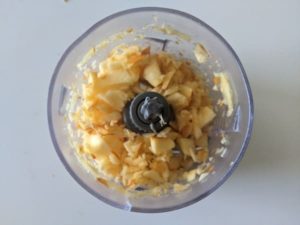
- The pumpkin was pureed too much, and the DNA was obliterated
- We had too little pumpkin puree for the amount of salt, water, detergent, and alcohol.
- Instead of whirling the pumpkin-salt-water with the soap, we carefully put the pumpkin into a glass bowl and gently stirred in the soap. Again, we were trying to not obliterate the DNA.
In our second attempt at extracting DNA from the pumpkin, we didn’t make a soupy puree of the pumpkin. We used a Ninja and gave it about 5 good pulses. We still had bits and small chunks.
Also, we filled the Ninja one time with pumpkin, chopped it a little, set the contents aside in a bowl. Then we did another batch in the Ninja. We added that to the pumpkin in the glass bowl.
Next, we gently stirred the detergent into the pumpkin mixture.
Watch a Video of this DNA Extraction Activity (It’s such an easy project!)
Here is a quick video of the activity, then below are the instructions. You can quickly print the activity materials list and instructions by clicking the Print button.
Instructions for Extracting DNA from a Pumpkin
Extract DNA from a Pumpkin
Materials
- 1 Medium Pumpkin
- 1/2 Cup Isopropyl alcohol, 70% or 91%. This should be cooled in a freezer for about an hour.
- 1 Tablespoon Salt (regular table salt)
- 1/4 Cup Clear dish washing soap
- Beakers, test tubes or cylinder or small glass cups will work
- 1 Liquid measuring cup
- 1 Tablespoon measuring spoon
- 3-4 Coffee filters
- 1 Blender. We used a NutriBullet
- 1 Funnel
Instructions
- Cut off a section of the pumpkin and clean off the “insides.” Cut the pumpkin into small chunks that will fit into the blender.
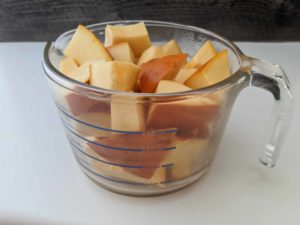
- Add 1/2 cup of water.
- You want to blend it just enough to cut the pumpkin into small pieces but not liquefy it. We did about 5 pulses on our blender. When we over-processed the pumpkin, it may have obliterated the DNA, which may have been why our first batch didn't work.
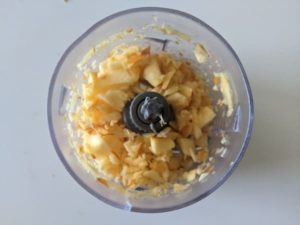
- If your blender is too full, carefully transfer the pumpkin to a bowl and add one tablespoon of salt.
- Add 1/4 cup of the clear dishwashing liquid. Stir carefully with a spoon, but mix thoroughly.
- Place the coffee filter securely into the funnel, and place the funnel securely over a glass beaker or cylinder or a drinking glass
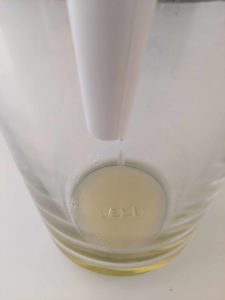
- Fill the funnel 2/3 of the way with the pumpkin mixture. Allow the pumpkin water to drain for 20 minutes or so. We made a makeshift funnel with another coffee filter and a small beaker, to help facilitate this step in the process.
- When enough pumpkin water has drained, gather the 1/4 of isopropyl alcohol. Tilt the glass slightly and slowly put the alcohol into the glass down the tilted side of the glass. The goal is to form a layer of the alcohol on top of the pumpkin water. Gently place the glass flat on the work surface and wait.
Notes
- Put the alcohol in the freezer for at least 2 hours. Alcohol does not freeze, so you cannot get the alcohol too cold.
- We opted for clear dishwashing liquid without any strong scents. Below is a photo of the label from the dish soap we used
- It takes a while for the liquid from the pureed pumpkin mixture to drain through the coffee filter. We set up two glasses with funnels and filters and a makeshift funnel (pictured below).
- We used our Ninja instead of a full-sized blender.
You will see a milky layer form between the pumpkin water mixture and alcohol. This layer contains the strands of DNA that were released from the cells.
Extracting DNA from a Pumpkin – Explanation of What Happened and Why
Cellulose is found in the cell wall of every plant cell, including every cell in the pumpkin used in this activity. Cellulose is the substance that provides strength to the cell wall and helps with water absorption, which helps keep the plant hydrated. Cellulose is a complex carbohydrate that does not break down in water.
By putting the pumpkin through the blender, we are breaking up the cellulose in the cell walls.
Now, the cell membrane is the cell wall inside the cellulose. This cell membrane is made of lipids (fats) and proteins.
Next, we need to understand more about detergent molecules. Detergent consists of long molecules, also called surfactants. Each of these long molecules has a head and a tail. The head is attracted to water; in other words, it is hydrophilic.
The tail is attracted to dirt and grease, this attraction characteristic is called hydrophobic.
So, when detergent is used to clean dishes, the hydrophobic end of the surfactant attaches to the grease on the dishes. The hydrophilic end attaches to the water.
When we added the detergent to the pumpkin juice, the detergent attached to the lipds (fats) in the cell membrane. The hydrophilic end of the detergent molecule attached to the water. These actions cause the cell wall or membrane to rupture and the cell is disintegrated in a process called lysis.
When we carefully added the layer of alcohol, the DNA that was in the cell does precipitate out because it does not dissolve in alcohol (This means DNA is not soluble in alcohol.), so the strands of DNA clump together and look milky in appearance.
Resources to Use Alongside This DNA Extraction Project
- If you are doing this project with a variety of ages and have 4th to 6th graders, this coloring book on the human body would be an engaging way to help your child learn and retain detailed information. It doe cover DNA.
- For middle and high school students, Cell Press offers some outstanding cell biology handouts and coloring pages.
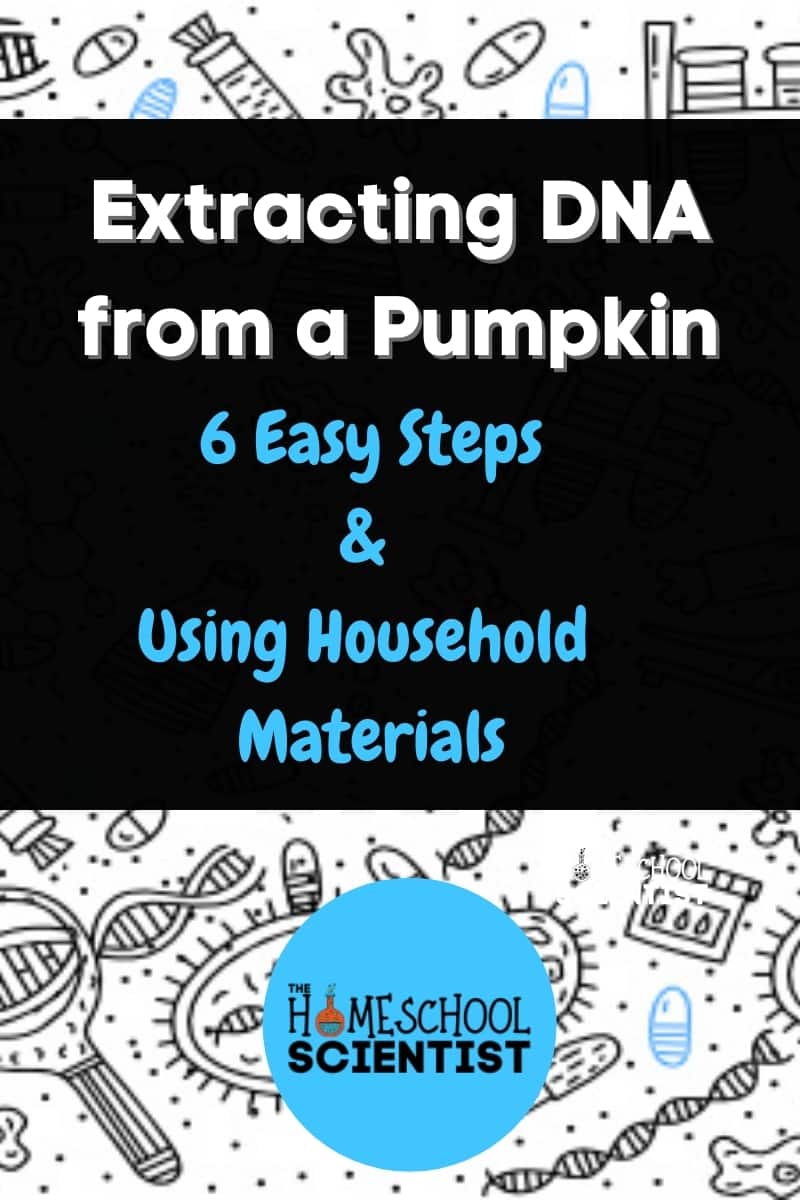
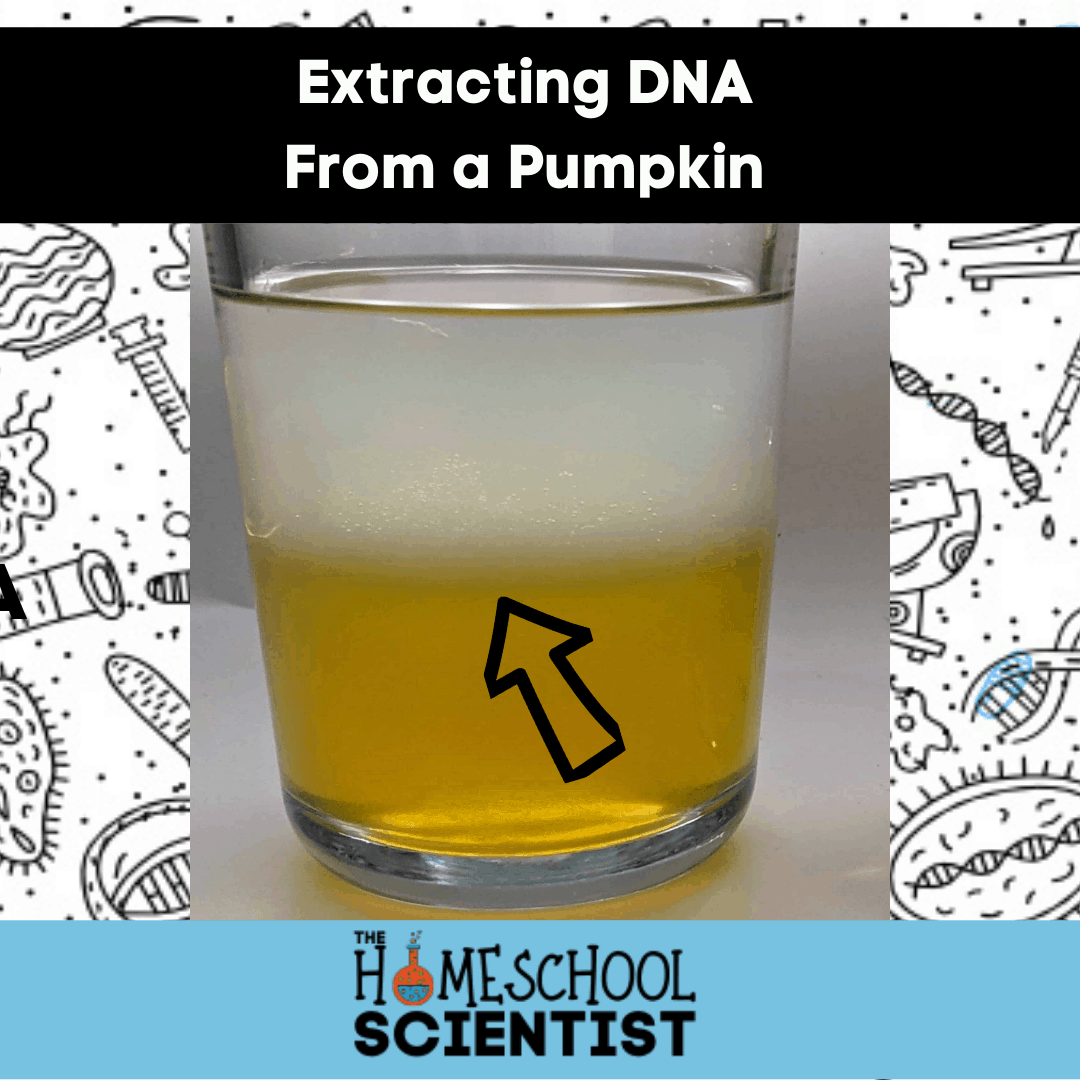
I hold a master’s degree in child development and early education and am working on a post-baccalaureate in biology. I spent 15 years working for a biotechnology company developing IT systems in DNA testing laboratories across the US. I taught K4 in a private school, homeschooled my children, and have taught on the mission field in southern Asia. For 4 years, I served on our state’s FIRST Lego League tournament Board and served as the Judging Director. I own thehomeschoolscientist and also write a regular science column for Homeschooling Today Magazine. You’ll also find my writings on the CTCMath blog. Through this site, I have authored over 50 math and science resources.



